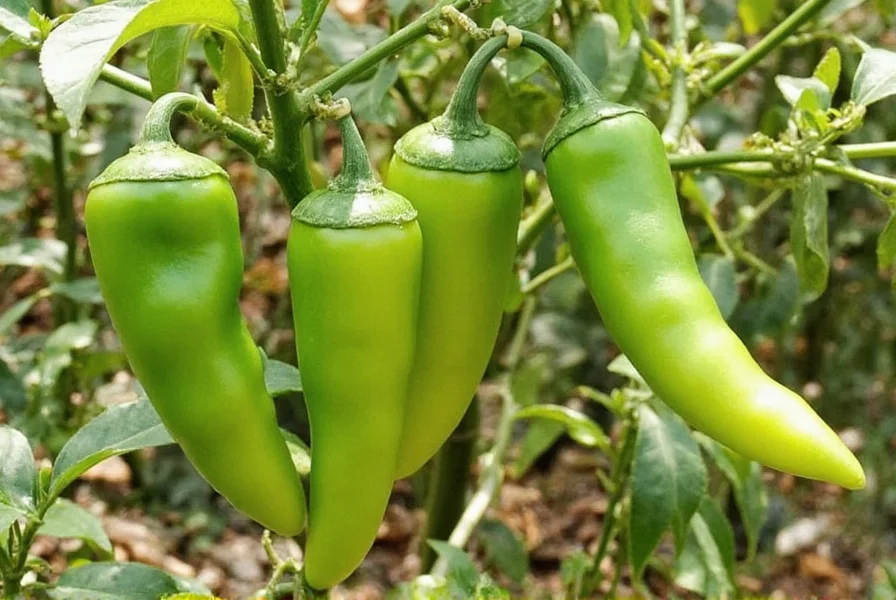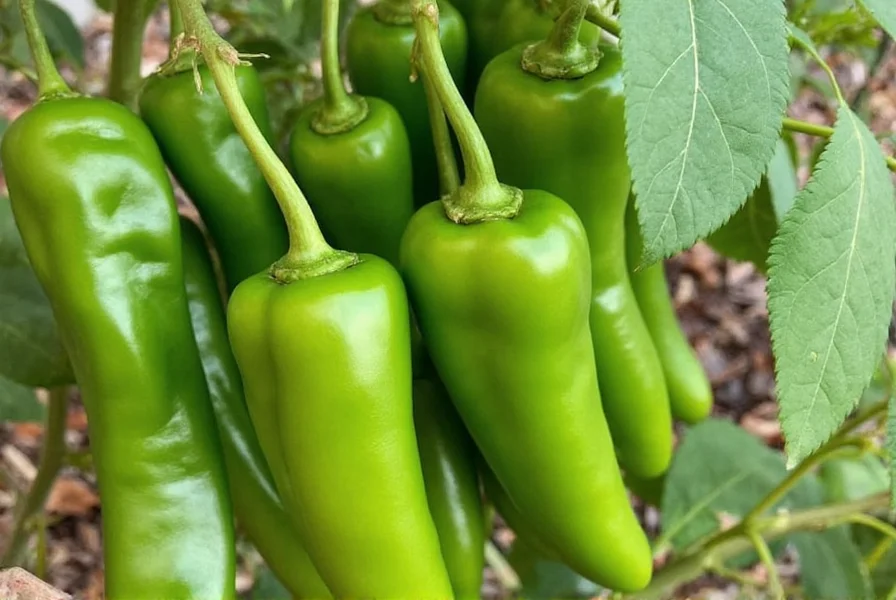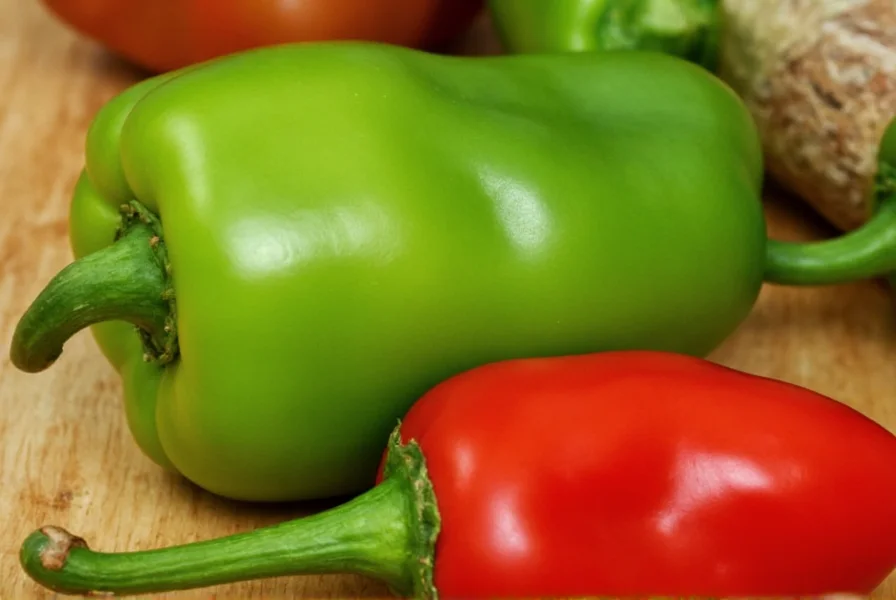Knowing precisely when are serrano peppers ready to pick ensures optimal flavor, heat level, and continued plant productivity. These popular chili peppers offer a distinctive balance of heat and flavor that makes them valuable in salsas, sauces, and fresh preparations. Harvesting at the right moment maximizes your gardening efforts and culinary results.
Key Visual Indicators of Serrano Pepper Ripeness
Unlike some vegetables that continue ripening after harvest, serrano peppers won't develop additional heat or flavor once picked. Recognizing these visual cues helps determine the perfect harvest window:
| Ripeness Stage | Color | Size | Texture | Flavor Profile |
|---|---|---|---|---|
| Immature | Dark green | Less than 1 inch | Firm but thin-walled | Mild heat, grassy flavor |
| Optimal Harvest | Bright green to first color change | 1-2.5 inches | Glossy, firm with slight flexibility | Medium heat (10,000-23,000 SHU), crisp flavor |
| Full Maturity | Vibrant red, orange, or yellow | 2-4 inches | Deeply glossy, firm | Maximum heat, complex sweet notes |
How to Determine When Serrano Peppers Are Ready to Pick
Successful harvesting depends on observing multiple factors rather than relying on a single indicator. Understanding how to tell when serrano peppers are ripe involves checking these elements:
Color Transformation
The most reliable sign of ripeness is color change. While many gardeners harvest serrano peppers while still green, they reach peak heat and flavor when they transition to their mature color. Most varieties turn bright red, though some cultivars mature to orange, yellow, or even brown. The color change typically begins at the stem end and progresses toward the tip.
Size and Shape Development
Mature serrano peppers typically measure 1-4 inches long with a distinctive tapered shape and relatively thin walls. When determining how big should serrano peppers be when picking, remember that size varies by growing conditions. The pepper should feel substantial in your hand without appearing shriveled or overly thick-walled.

Texture and Firmness
Ripe serrano peppers have a glossy sheen and feel firm but slightly flexible when gently squeezed. They shouldn't feel rubbery (underripe) or soft/mushy (overripe). The skin should appear taut and unwrinkled. This serrano pepper texture indicator helps distinguish ready-to-pick peppers from those needing more time.
Harvesting Techniques for Maximum Plant Productivity
Proper harvesting technique ensures continued production throughout the growing season. When you've determined the best time to pick serrano peppers, follow these steps:
- Use sharp scissors or pruning shears to cut the stem about ¼ inch above the pepper
- Avoid pulling or twisting peppers, which can damage delicate branches
- Harvest regularly every 2-3 days during peak production
- Handle peppers gently to avoid bruising the thin skin
- Wear gloves when harvesting hot varieties to protect your skin
Regular harvesting actually encourages the plant to produce more fruit. Leaving mature peppers on the plant signals it to slow production. This serrano pepper harvesting timeline knowledge helps maximize your yield throughout the growing season.
Consequences of Early or Late Harvesting
Understanding what happens if you pick serrano peppers too early helps avoid common mistakes:
Harvesting Too Early
Peppers picked while still dark green and small will have:
- Lower heat levels (6,000-10,000 SHU instead of 10,000-23,000)
- Less developed flavor complexity
- Thinner walls that don't hold up well in cooking
- Reduced storage life after harvest
Leaving Peppers Too Long
Overripe serrano peppers may show:
- Loss of glossy sheen and development of wrinkles
- Soft spots or discoloration
- Increased risk of splitting or pest damage
- Potential reduction in new flower production

Post-Harvest Handling and Storage
After determining when serrano peppers are ready to pick and harvesting them properly, follow these storage guidelines:
- Wipe peppers gently with a dry cloth (don't wash until ready to use)
- Store in perforated plastic bags in the refrigerator crisper drawer
- Expect 2-3 weeks of freshness for green peppers, 1-2 weeks for colored varieties
- For longer storage, freeze whole peppers or slice and freeze for cooking
- Dry mature red peppers by hanging in a warm, dry location with good air circulation
Remember that serrano peppers won't continue ripening significantly after harvest, so timing your picking correctly is essential for achieving your desired heat level and flavor profile.
Troubleshooting Common Harvest Issues
Gardeners often encounter these challenges when determining how to know when serrano peppers are ready:
Peppers Not Changing Color
If your serrano peppers remain stubbornly green beyond 80 days:
- Check soil nutrients - excess nitrogen delays ripening
- Ensure adequate sunlight (minimum 6-8 hours daily)
- Verify proper watering - both drought and overwatering affect ripening
- Consider temperature - peppers ripen best between 70-85°F (21-29°C)
Small Pepper Size
If peppers aren't reaching expected size:
- Thin overcrowded plants to improve air circulation and nutrient access
- Apply balanced fertilizer formulated for fruiting plants
- Check for pests like aphids that can stunt growth
- Ensure consistent moisture without waterlogging roots
Frequently Asked Questions
How long after flowering are serrano peppers ready to pick?
Serrano peppers typically mature 25-35 days after flowering. The exact timeframe depends on growing conditions, with optimal temperatures (70-85°F) accelerating development. Check peppers regularly once flowers have been pollinated and small green peppers begin forming.
Do serrano peppers get hotter the longer they stay on the plant?
Yes, serrano peppers generally increase in heat as they mature and change color. Green serranos measure around 10,000 SHU, while fully ripened red varieties can reach 23,000 SHU. The capsaicin concentration increases as the pepper develops, with peak heat occurring just before the pepper reaches full color saturation.
Can you eat serrano peppers when they're still green?
Absolutely. Many cooks prefer green serrano peppers for their brighter, grassier flavor profile. Green serranos have slightly less heat (6,000-10,000 SHU) compared to fully ripened peppers. They work particularly well in fresh salsas, guacamole, and as a garnish where you want noticeable heat without overwhelming sweetness.
How often should I check my serrano pepper plants for ripe peppers?
During peak production season (typically mid-summer through early fall), check your serrano pepper plants every 2-3 days. Frequent harvesting encourages continued production, as the plant will stop producing new flowers if mature fruit remains on the branches. Morning is the ideal time to check, when temperatures are cooler and peppers are most hydrated.
What's the difference between harvesting serrano peppers for fresh use versus drying?
For fresh culinary use, harvest serrano peppers when they're glossy and firm, either green or partially colored. For drying, wait until peppers have fully ripened to red (or their mature color) and developed maximum sugar content. Fully ripened peppers yield more flavorful dried products with better color retention. Always harvest drying peppers in dry conditions to prevent mold during the drying process.











 浙公网安备
33010002000092号
浙公网安备
33010002000092号 浙B2-20120091-4
浙B2-20120091-4